Memory foam vs hybrid mattress: How to pick between them
It's memory foam vs hybrid mattresses in our expert head-to-head
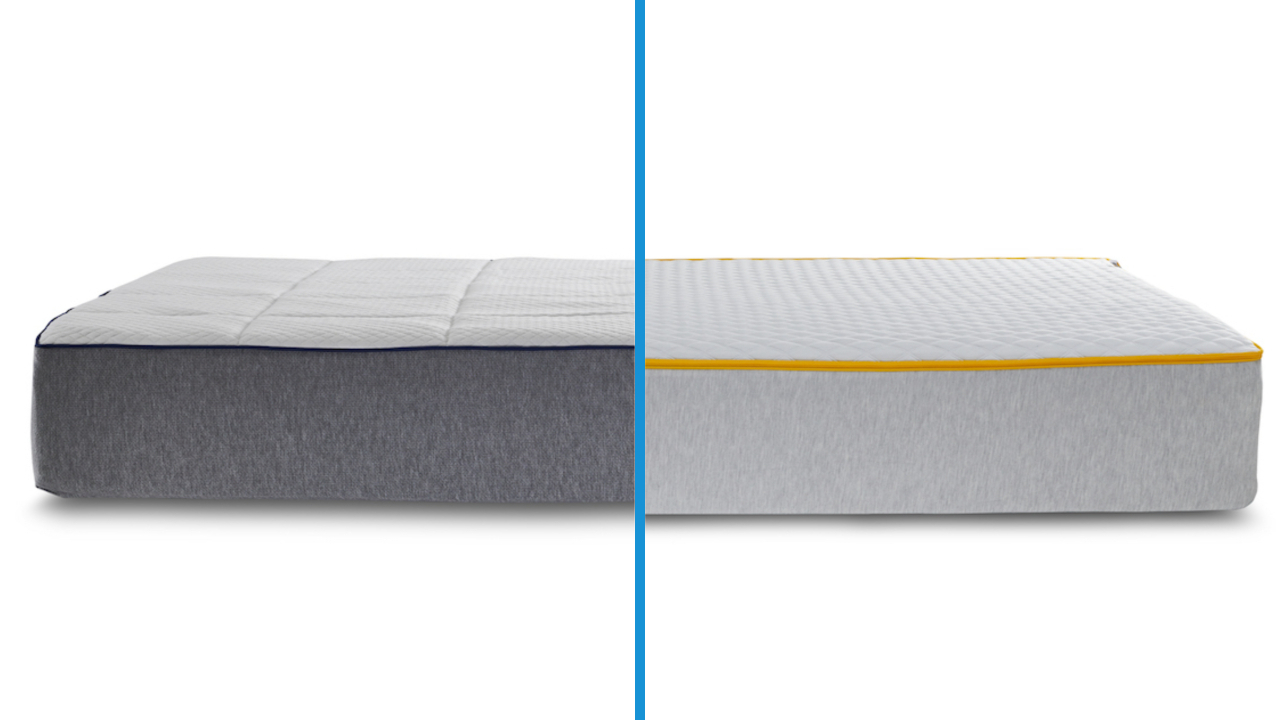
If you’re struggling to decide in the memory foam vs hybrid mattress debate, then you're in the right place. When it comes to choosing the best mattress, all-foam and hybrids each have benefits and drawbacks, depending on how you like to sleep, your budget, if you share a bed, and whether you have specific health issues.
We look at all-foam models in detail in our best memory foam mattress guide, so here we're giving you a simpler overview of both types to help you easily focus in on the right one for you.
We'll do this by looking at their key differences, as well as the materials and build quality, plus how memory foam vs hybrid mattresses compare on price, trial periods and warranties. Here's what you need to know...
Memory foam vs hybrid mattress: At a glance
- Memory foam mattresses create a relaxing, body hug feel
- Hybrid mattresses are more breathable and offer good support
- Both types suit a wide range of sleeping positions
Most of the best mattresses in a box are hybrid models, which means they use a combination of foam and either springs or coils. These are normally more expensive of the two because they use more materials and often pack in higher levels of technology, but buying online can save you hundreds. Both types usually come on a trial period too, so (depending on the brand), you'll get anywhere from 30 to 365 nights to test drive yours at home.
If you have back problems, neck pain or issues with spinal alignment, a foam mattress is better for you because they contour your body, almost hugging it when you lie down. Memory foam models are also a good choice if you need a mattress with high levels of motion isolation so that your restless partner won't disturb you so much with their in-bed movements during the night.
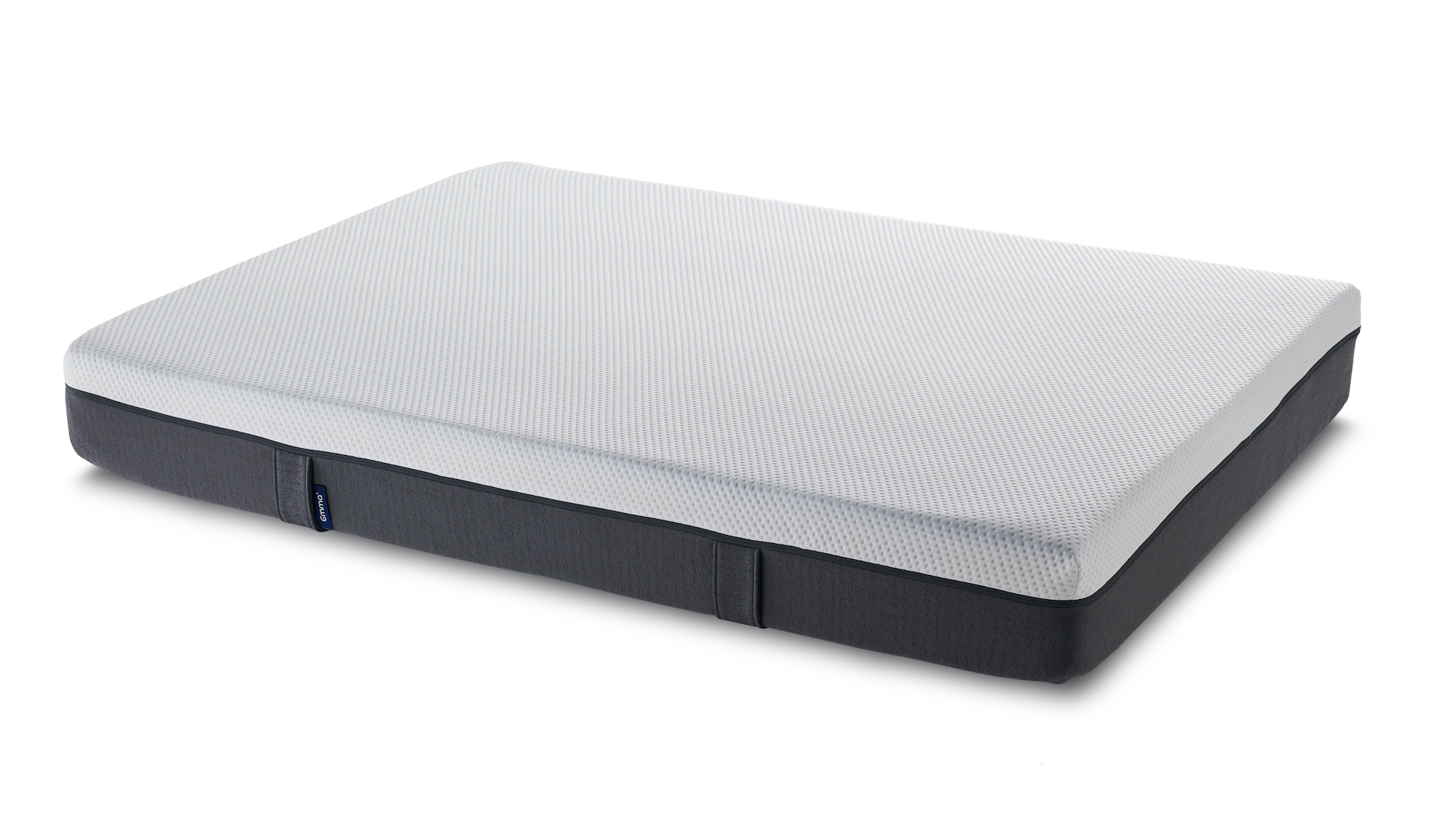
Hot sleepers are better with hybrid mattresses, as by design they are more breathable (air flows more freely around coils and springs). A hybrid would also suit you if you dislike the sensation of sinking deeply into a body-hugging bed, or if you enjoy a firmer mattress with a little bounce. For a certified organic pick, read our guide to the best organic mattresses.
Memory foam vs hybrid mattress: Key differences
- Memory foam models use multiple layers of different foams
- Hybrid models use different foams and either springs or coils
- All-foam options are usually cheaper (but not always) than hybrids
In the battle of memory foam vs hybrid mattresses, the main difference is found in the support core. Foam models typically contain a high-density polyfoam core, whilst hybrids use a coil system. As the name implies, memory foam models are mainly made of memory foam, which is usually layered with other types of foam to provide better support.
Hybrids use a variety of materials including foam, microcoils, latex, wool, gel foam and other types of foam. Expect to pay around $600 / £400 up to $1,500 / £1,300 for a good queen size all-foam option. Hybrid mattresses are generally more expensive at around $1,200 / £800 - $2,000 / £1,800 for queen size. That said, there are plenty of great mattress sales around to lower the overall price you pay.
Brands to look out for include DreamCloud, Saatva, Nectar, Casper and Purple in the US, and Emma, Simba, Otty, Dormeo and Eve in the UK. For the latest savings, check out the following guides:
- Tempur-Pedic mattress sale: the best deals to look for
- Saatva mattress sale: early offers now live
- The best Nectar mattress sales and deals to jump on now
- Save on hybrids with the Casper mattress sale
Memory foam vs hybrid mattress: Price, warranty
- Memory foam warranties range from 10 years to lifetime
- Hybrid warranties also range from 10 years to lifetime
- All-foam mattresses are often much cheaper
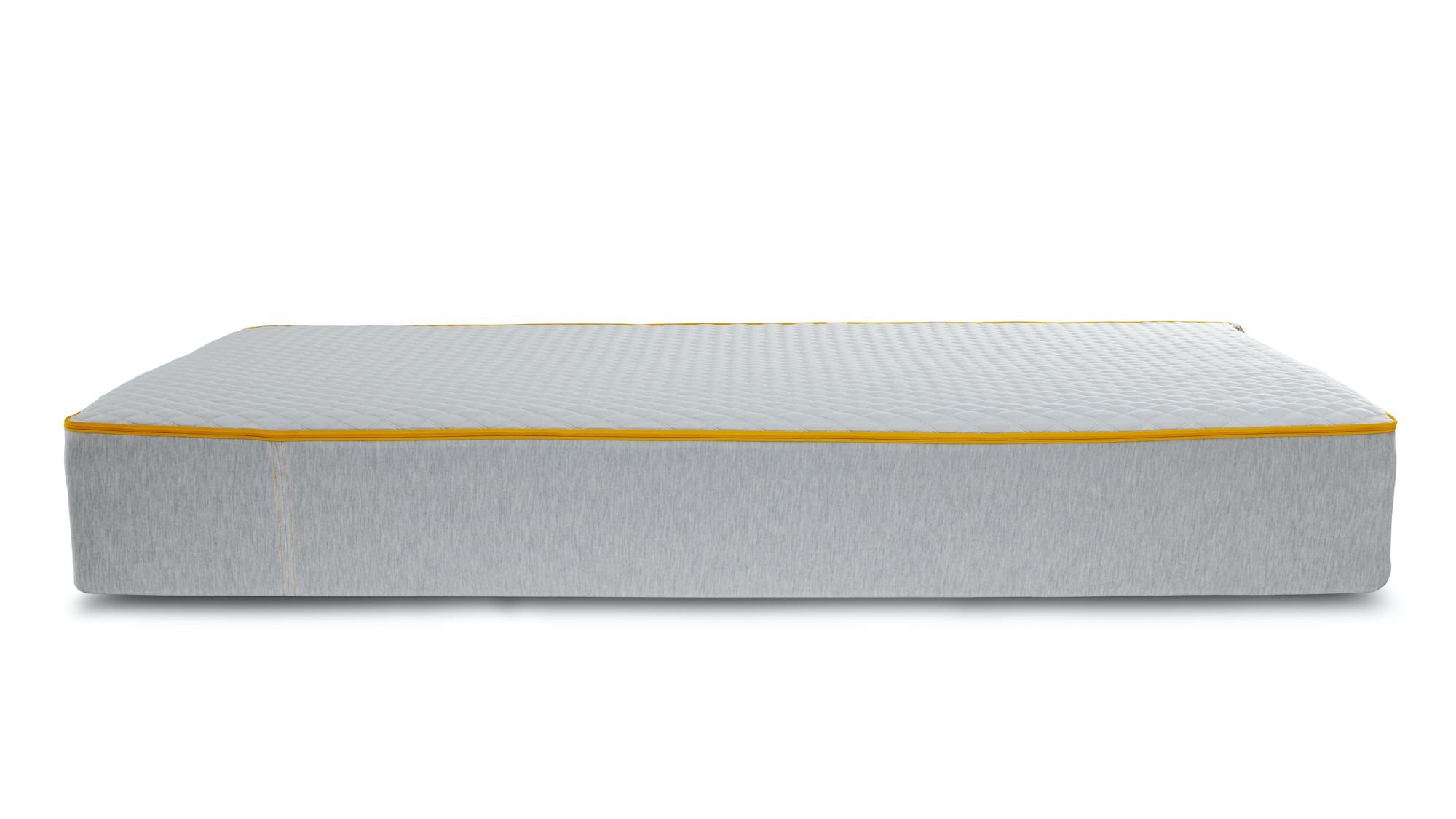
Over the years, it has become standard for memory foam and hybrid mattress manufacturers to offer a trial period of around 100 nights. Experts recommend sleeping on a new bed for 21-30 consecutive nights as this will give you a clearer picture of whether it suits your body and sleep or not, so 100 nights is ample. Brands like Nectar, Avocado and DreamCloud offer 365-night trials. Disappointingly, Tempur-Pedic only offers a 30-night trial in the UK, whereas in the US it's 90.
Warranties range across both memory foam and hybrids too, with 10 years and 25 years being fairly standard, while Nectar and DreamCloud offer lifetime warranties. Mattress warranties typically cover spring unit failures in hybrids, as well as ‘visible’ indentation of a certain amount specified by each manufacturer. We explain this in more detail in our guide on how do mattress warranties work.
Price is where the memory foam vs hybrid mattress battle really kicks off. In general, all-foam models are cheaper than hybrids, which is to be expected as they use less of a variety of materials. You do get the odd exception to the rule though – Simba in the UK and DreamCloud in the US are two examples of competitively priced hybrids. Check out our guide to the best Simba mattress deals, and the latest DreamCloud mattress sales for the latest savings.
Winner: If budget is a factor, a memory foam mattress is going to be the obvious choice 9 times out of 10. With similar warranties and trial periods across both types of mattress, memory foam just edges as the winner here.
Memory foam vs hybrid mattress: Materials
- Memory foam models are usually longer-lasting than hybrids
- Hybrids are heavier because they contain at least one layer of coils
- Both can be carbon neutral, depending on the brand you buy from
Memory foam, otherwise known as viscoelastic foam, was originally designed by NASA to use as cushioning in aircraft seats. Over time it was filtered down through the medical profession and ended up being used in a variety of consumer products, including mattresses. A typical memory foam bed contains a memory foam comfort system combined with a high-density polyfoam support core.
Hybrids combine elements from a range of mattress types. For example, a pocketed coil support system plus various other materials such as foam, polyfoam, latex, wool or gel foam. Using a combination means that hybrids suit many styles of sleeper as there’s something in the build to support every sleeping position.
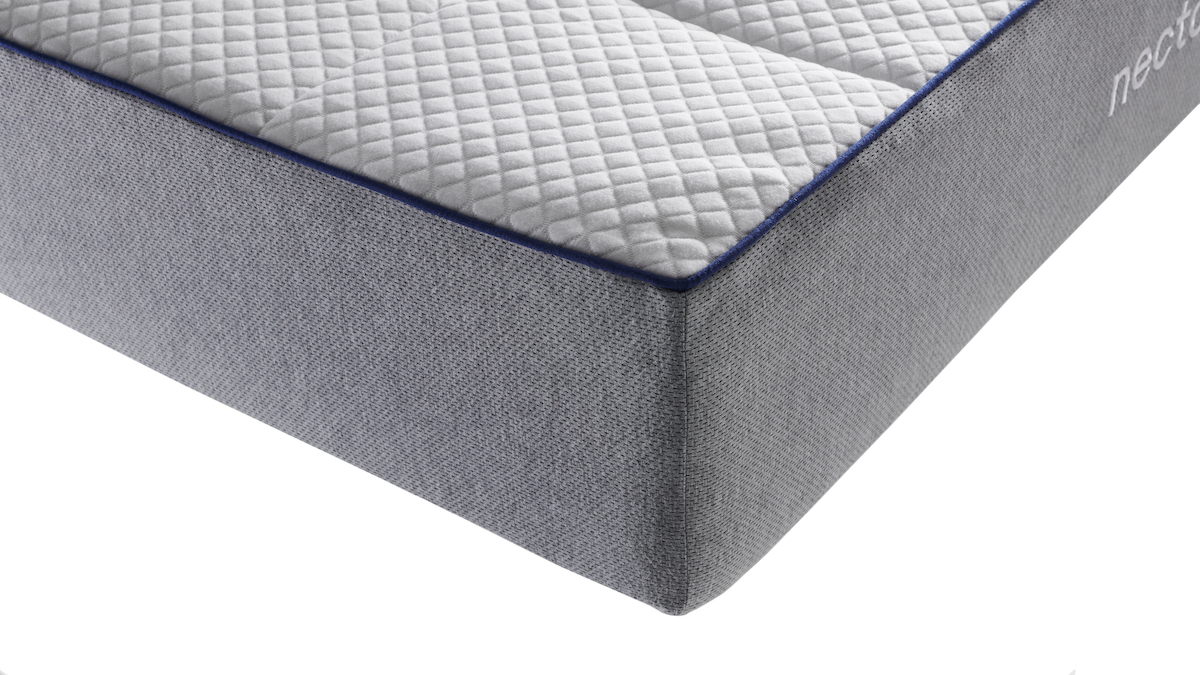
Hybrids tend to be far heavier as they contain more materials and at least one layer of heavy coils. But they are usually more breathable because air flows more freely around the coils and springs. Memory foam – a common material used in the best mattress toppers too – provides a unique ‘cradling’ feel and, because these models contain less materials, they will usually last a year or two longer than hybrids.
Winner: Although all-foam beds last a little longer, we think hybrid mattresses come out on top thanks to a more varied build structure and range of materials.
Memory foam vs hybrid mattress: Pros and cons
- Memory foam produces a hugging feeling but it does sleep warm
- Hybrids are more breathable but they can be noisier to sleep on
- Both deliver high levels of pressure relief on your back and hips
There are a number of benefits and drawbacks to each type of mattress. Taking the pros of memory foam first, these win for pressure relief and contouring. They are also particularly good at keeping your spine aligned to relieve pressure at your shoulders, hips and back.
Another benefit is motion transfer. The contouring magic of foam absorbs motion to a very high level, preventing movement from spreading across the mattress. So if you share a bed with someone who moves around a lot during sleep, motion isolation could make a big difference to your shut-eye. Finally, this material is hypoallergenic and naturally resistant to dust, dust mites and many other allergens.
The drawbacks of memory foam mattresses include a tendency to trap heat. A lot of manufacturers work to combat this by adding cooling materials or using individual pockets to create more space (and therefore airflow). But in general, they’ll always sleep hotter than a hybrid.
While we love the high levels of motion isolation, there is a downside to it: because the mattress will be hugging you and creating a feeling of sinking in, you may find it harder getting in and out of bed. There's also a lack of edge support. Foam is designed to conform to your shape, which means these models are prone to breakdown at their edges as the mattress sinks further.
Latex is another popular foam choice for body contouring, as we explain in our memory foam vs latex mattresses comparison.
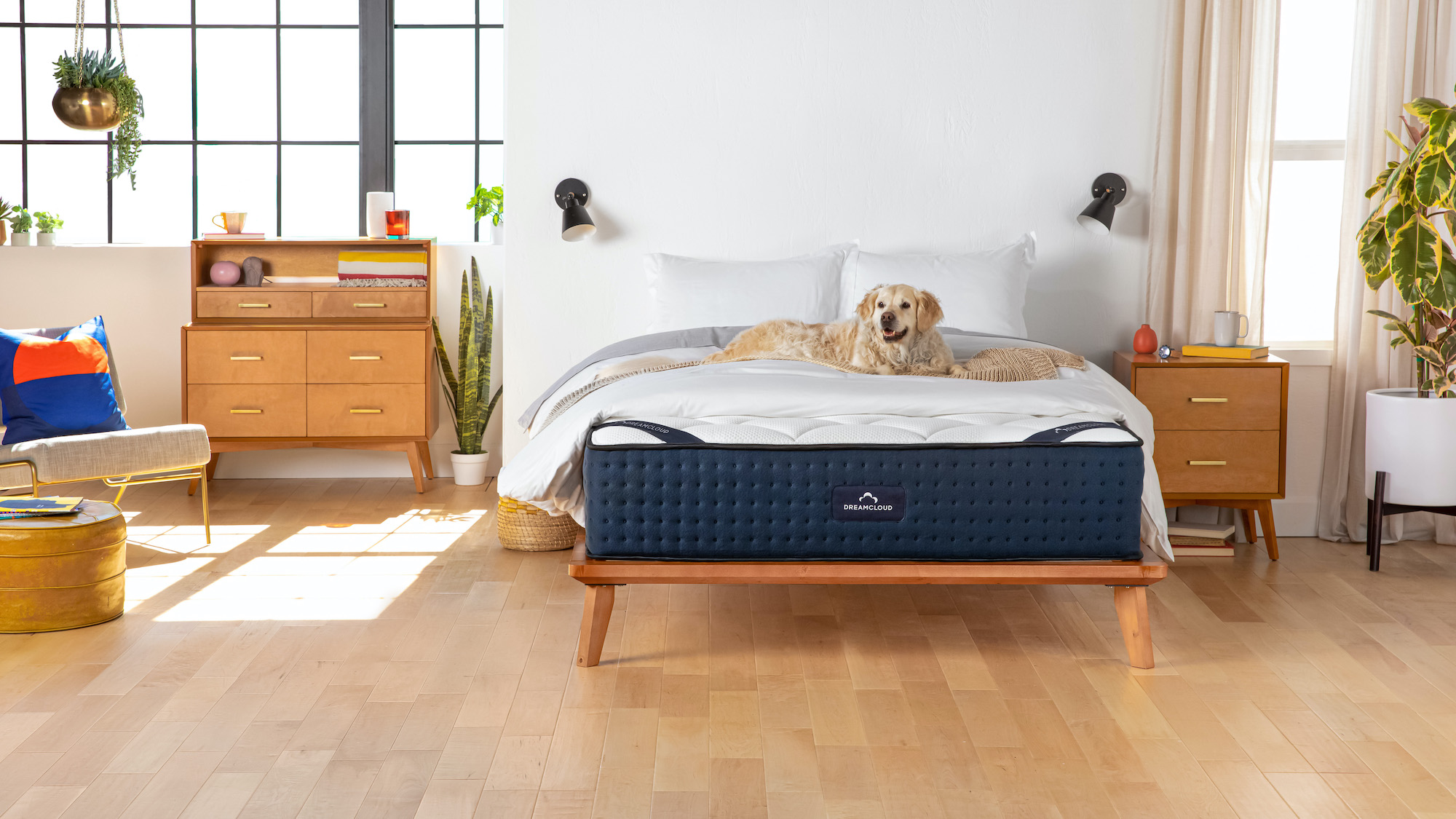
Hybrid mattresses are excellent at temperature regulation. They often incorporate materials with cooling technologies, and combined with the open spaces around the coils they use, air is better able to circulate and keep you cooler during sleep.
When it comes to support, hybrids tend to be firmer (there are soft exceptions though), with increased edge support and no sagging across the surface. The use of coils or springs also makes the sleep surface bouncier and quicker to respond, which enabling you to comfortably change position quickly and easily.
So those are the benefits, but there are drawbacks too. Let's start with sound absorption: the coils in hybrid models make more noise than foam models and, as they weaken over time, the potential for noise and motion transfer increases. Although hybrids transfer less motion than an innerspring, you are still likely to feel some movement from a partner, which isn’t great if you’re a light sleeper.
Hybrid mattresses also have more layers and steel coils. This makes them much heavier, which can make them difficult to set up, move and rotate during regular cleaning and maintenance.
Winner: We're calling this one a draw, as both have huge benefits depending on how you like to sleep and what your body needs. If you enjoy the feel of being hugged during sleep, a foam option is perfect for you. But if you sleep hot or co-share your bed and the two of you have very different support and sleep needs, then a breathable hybrid will serve you better.
Memory foam vs hybrid mattresses: Which should you pick?
Overall, we’ve awarded the winner’s trophy to hybrid mattresses. You will pay more for a hybrid, but they provide support to a wider range of sleeping positions, making them ideal not only for those who change position throughout the night, but to partners who share a bed yet have different mattress needs.
Hybrids are bouncy and receptive, and help keep sleepers cool and comfy for longer, so in turn they stand more of a chance of sleeping better. The firmer surface they provide also helps to prevent them from sagging in various spots over the years.
However, that isn’t to say memory foam mattresses aren’t worth considering, because some of our go-to models are all-foam. Many people adore the enclosed ‘hugging’ feel they produce, and they are hard to beat for those who suffer from neck and back pain. In addition, if you’re on a budget or a light sleeper who shares a bed with a restless partner, foam mattresses should be high on your list.
Read more:
- The best pillows for all sleeping positions
- Freshen up your bed with a great mattress protector
- Saatva Classic mattress review: Luxury sleep for less
- Get cozy in bed with the best comforters
- Helix Midnight mattress review: a bed for everyone
- An expert guide to Black Friday mattress deals
Sign up to get the BEST of Tom's Guide direct to your inbox.
Get instant access to breaking news, the hottest reviews, great deals and helpful tips.

Jo Plumridge is an experienced mattress reviewer with several years' experience covering all things mattresses and sleep, and who tests memory foam, hybrid and organic mattresses. What Jo doesn't know about a boxed mattress isn't worth knowing, so naturally we tasked her with producing a series of features for Tom's Guide looking at all aspects of mattresses, from how to pick between latex and memory foam (it's a tricky one), to the seven mistakes people make when buying a mattress for the first time. When testing the DreamCloud Luxury Hybrid for Tom's Guide, Jo said: "I loved the back support and pressure relief it offered. Plus, it looks far more expensive than it is." When she isn’t writing about sleep, Jo also writes extensively on interior design, home products and photography.
